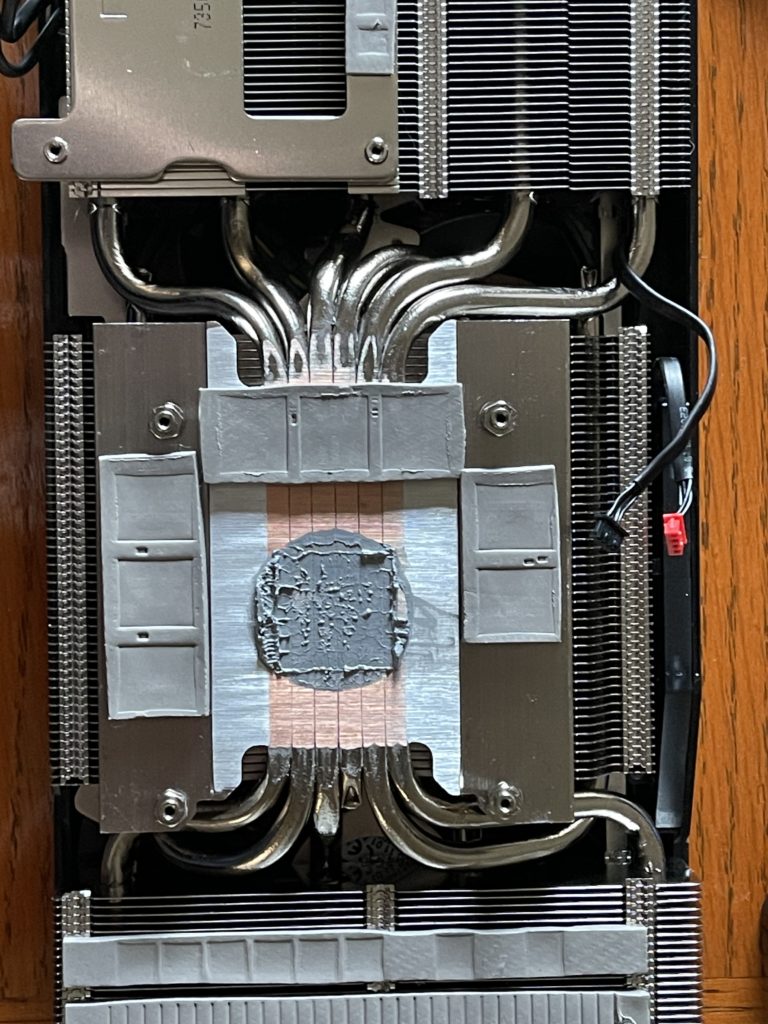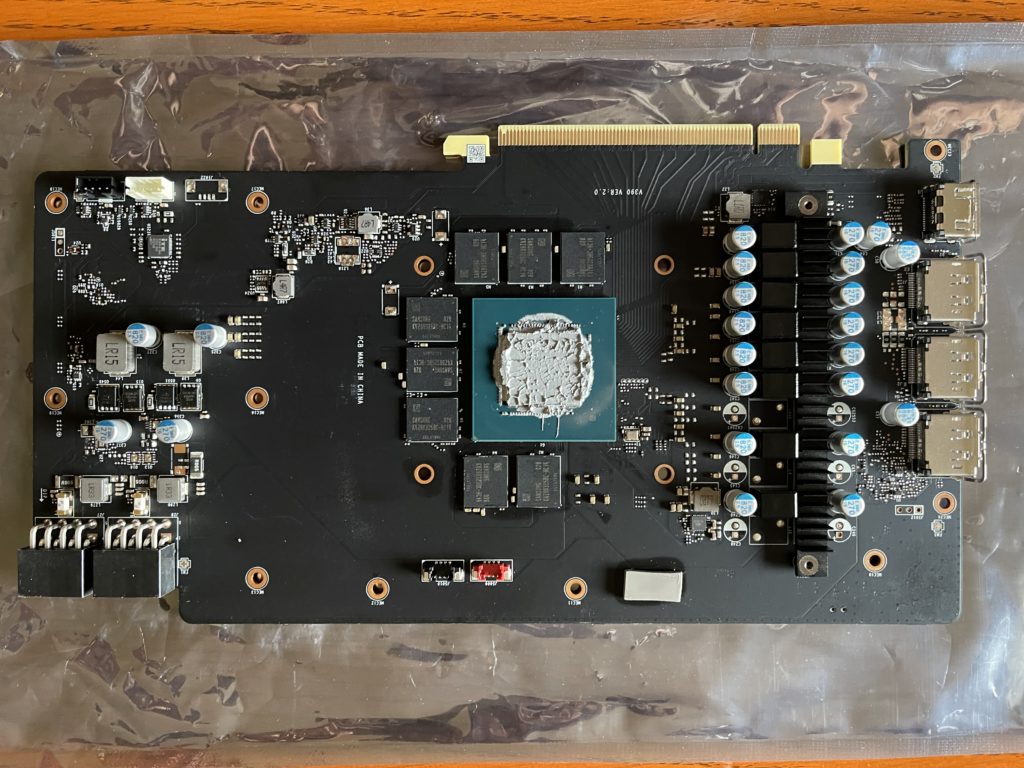Introduction

In our review today we will be taking a look at the MSI GeForce RTX 3060 Ti GAMING X TRIO, the highest-end RTX 3060 Ti currently produced by MSI. MSI does offer a non-“X” model that has a lower GPU Boost, but the “X” model we have today has a higher boost clock. Below that you will find the VENTUS and TWIN FAN models. The GAMING X TRIO also indicates this is a tri-fan design. In essence, this is the fastest GeForce RTX 3060 Ti video card MSI offers. Also check out our recent review of the MSI GeForce RTX 3070 GAMING X TRIO, the big brother and next step up from this video card.
This video card has a clear focus on performance, with its large cooling solution and an ample factory overclock. This video card is based on the Ampere architecture that was first released in September with the GeForce RTX 3080. That initial launch primarily focused on high-end cards, but as of December 1st we are finally seeing Ampere, in the form of GeForce RTX 3060 Ti come to form in the mid-range and it looks really interesting. The default MSRP for GeForce RTX 3060 Ti Founders Edition is $399, though the custom video card we have from MSI today will carry a price premium.
The MSI default MSRP for the MSI GeForce RTX 3060 Ti GAMING X TRIO will be $489.99. That is $90 over the MSRP of the Founders Edition. During our time writing this review we have found that this video card is another hard to come by release. At the moment the video card is listed at Amazon and Newegg but not anywhere near the official MSRP for the video card. Once the product is in stock more, hopefully, pricing will normalize.
At that price point of $489.99, you are right next to the $499 (MSRP) GeForce RTX 3070 Founders Edition pricing. With pricing this close it’s only natural to ask yourself where your money would be better spent, and that is exactly what we intend to find out in this review. In this review we will be pitting the MSI GeForce RTX 3060 Ti GAMING X TRIO against the NVIDIA GeForce RTX 3070 Founders Edition and the NVIDIA GeForce RTX 2080 Super Founders Edition.
MSI GeForce RTX 3060 Ti Models

MSI has several custom GeForce RTX 3060 Ti models. These models are the MSI GeForce RTX 3060 Ti GAMING, MSI GeForce RTX 3060 Ti VENTUS 2X OC, MSI GeForce RTX 3060 Ti VENTUS 3X OC, and the MSI GeForce RTX 3060 Ti GAMING X TRIO. The other products in MSI’s portfolio are lower-end variants that manage to stay closer to the NVIDIA GeForce RTX 3060 Ti’s MSRP and reference specs. The VENTUS and GAMING video cards come with either a dual or a triple-fan option as their names imply, along with a factory overclock applied.
MSI GeForce RTX 3060 Ti GAMING X TRIO
The MSI GeForce RTX 3060 Ti GAMING X TRIO graphics card is based on the Samsung 8nm process node and Ampere architecture. It features 38 SM’s, 4864 CUDA Cores, 152 Tensor Cores (3rd Gen), 38 RT Cores (Ray Tracing Cores) (2nd Gen), 152 TMUs, and 80 ROPs. It has a GPU Boost Clock of 1830MHz, 8GB of GDDR6 memory at 14GHz on a 256-bit bus providing 448GB/s of memory bandwidth. For reference, the GeForce RTX 3060 Ti Founders Edition has a GPU Boost Clock of 1665MHz. That is therefore a very large factory overclock of 1830MHz on the MSI GeForce RTX 3060 Ti GAMING X TRIO.
Once we received the product, we were shocked at just how large the box was for this mid-range video card. It really gave this card a more premium feel than you would get if it just came in a standard shoebox-sized container. The packaging is adorned with multiple references to NVIDIA technologies like DLSS, RTX, G-SYNC, and the like. As well as a plethora of information regarding MSI’s TRI FROZR 2 Cooling solution which we will discuss in more detail below. Inside the box, you find some common documentation as well as a Comic book guide for how to install a GPU that I found hilariously charming. Below all of this documentation is a well-packaged GPU tucked within a lot of protective foam, alongside a GPU support bracket for those concerned about GPU sag.
This GPU comes in at some rather large dimensions for a mid-range card, with measurements of 12.71 inches L x 5.51 inches W x 2.20 inches D in (323 L x 140 W x 56 D mm). This is almost entirely due to MSI deciding to stick with roughly the same cooling solution used with its higher-end MSI GAMING X TRIO video cards. CORE PIPE technology is a term used to describe MSI’s square machined heat pipes, that make full contact with the GPU die. This is part of MSI’s TRI FROZR 2 Cooling solution that also relies upon its TORX FAN 4.0, and FIN+AIRFLOW CONTROL solutions.
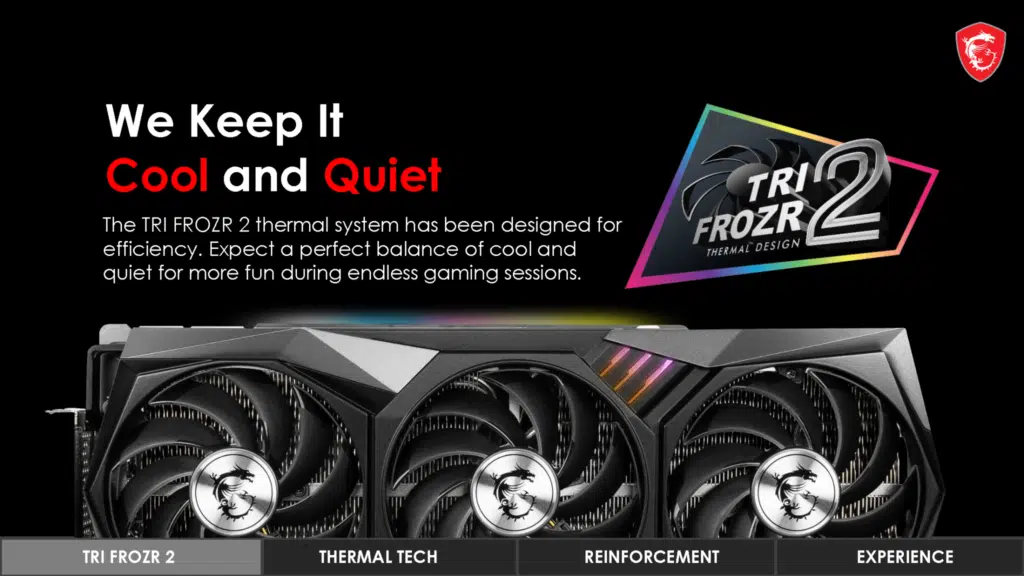
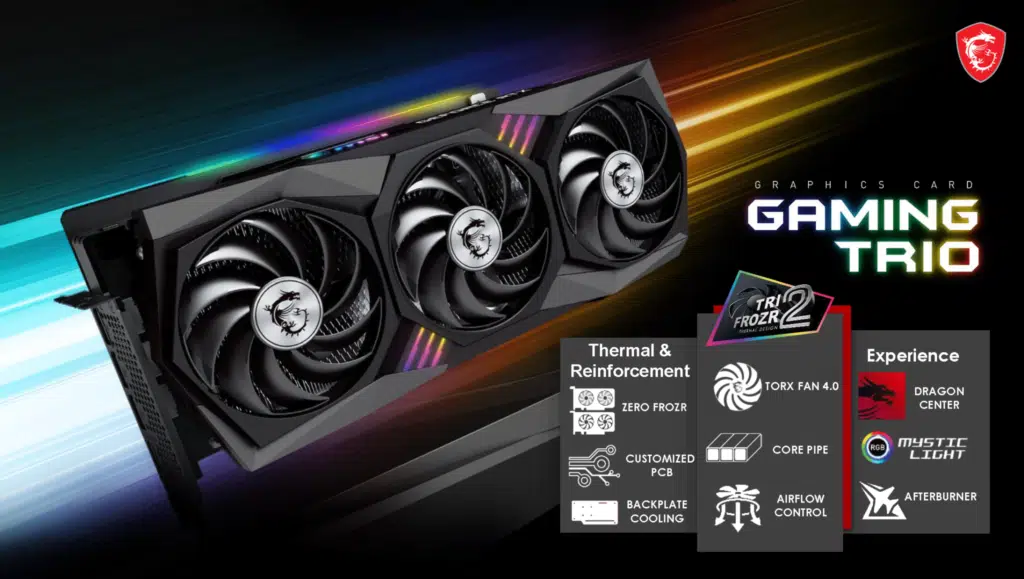
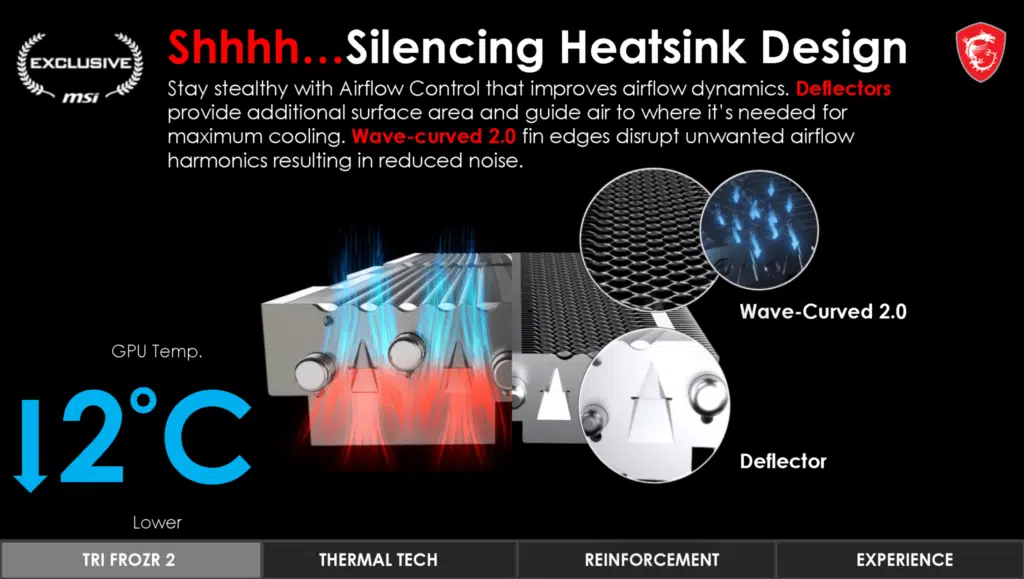

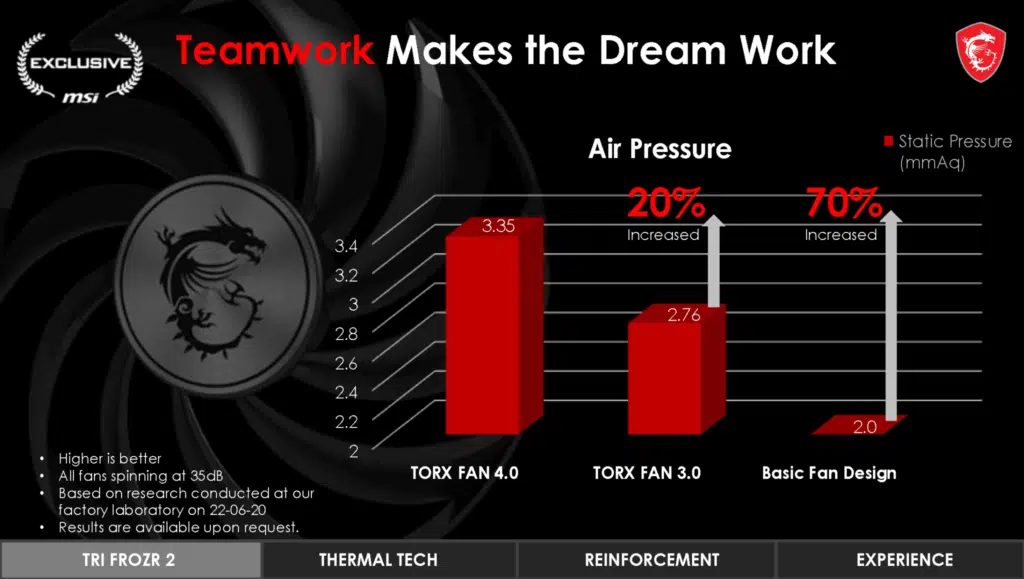
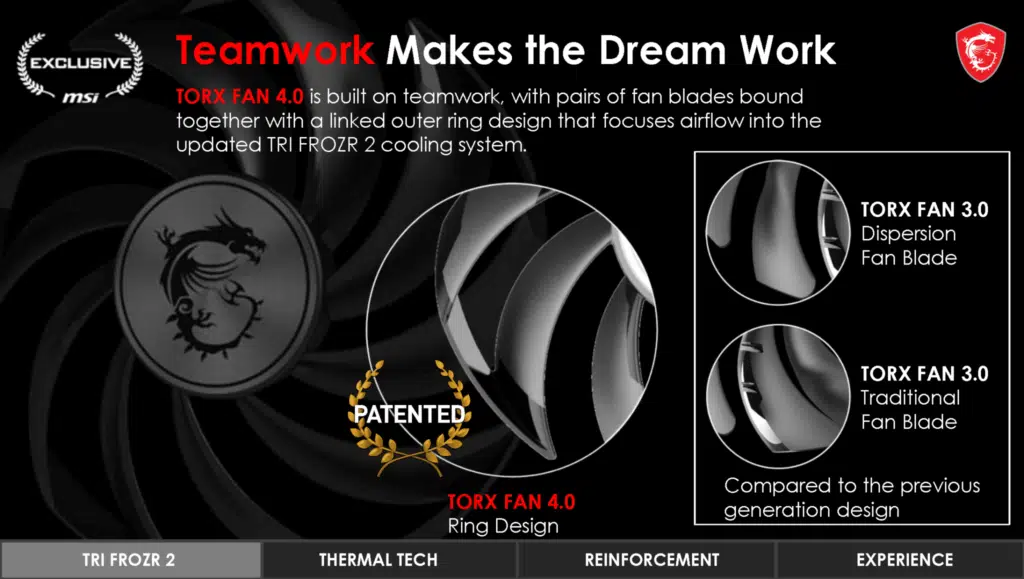
With TORX FAN 4.0 MSI has bound two blades together, with an outer ring design, that purports to increase airflow through the fins. While FIN+AIRFLOW CONTROL introduces channels in the heatsink that reduce unwanted harmonics leading to decreased noise. Finally, for those worried about GPU sag, no need, MSI has seen fit to include a GPU support inside the box which is a welcome inclusion with a GPU of this size.
Photos
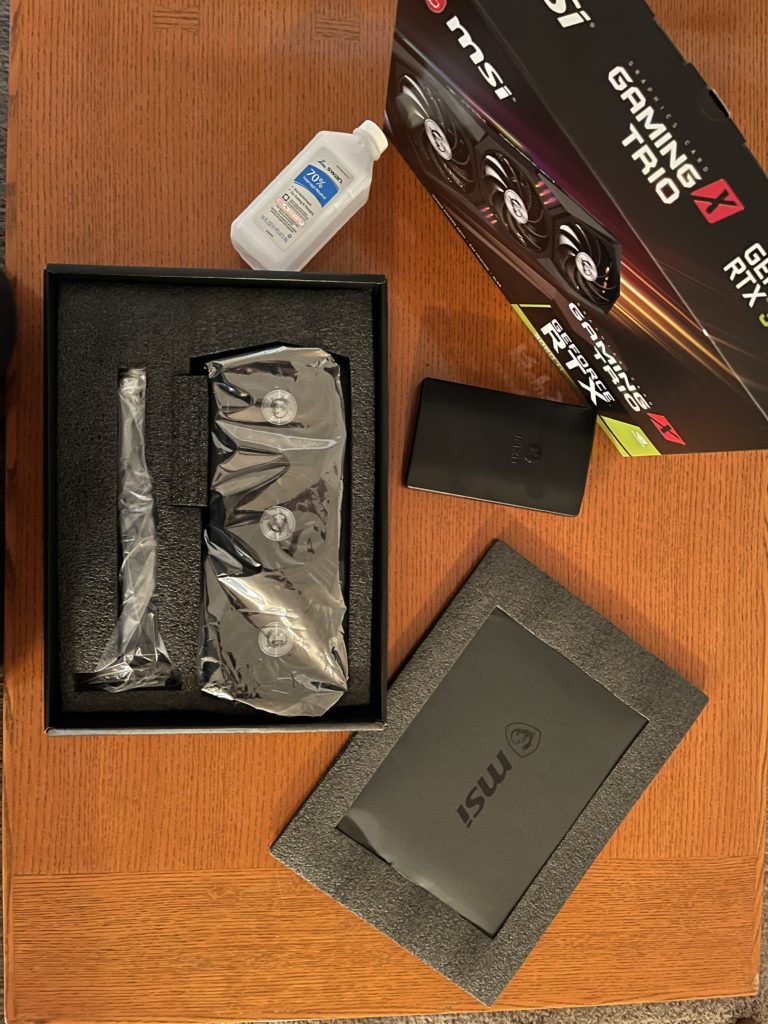
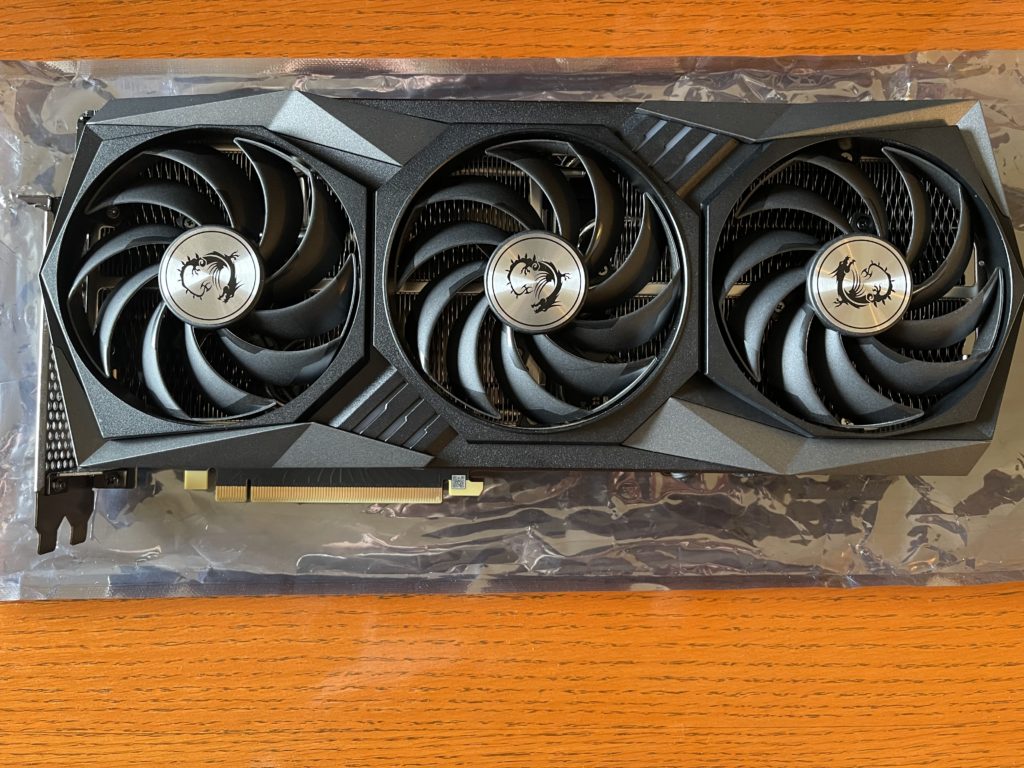
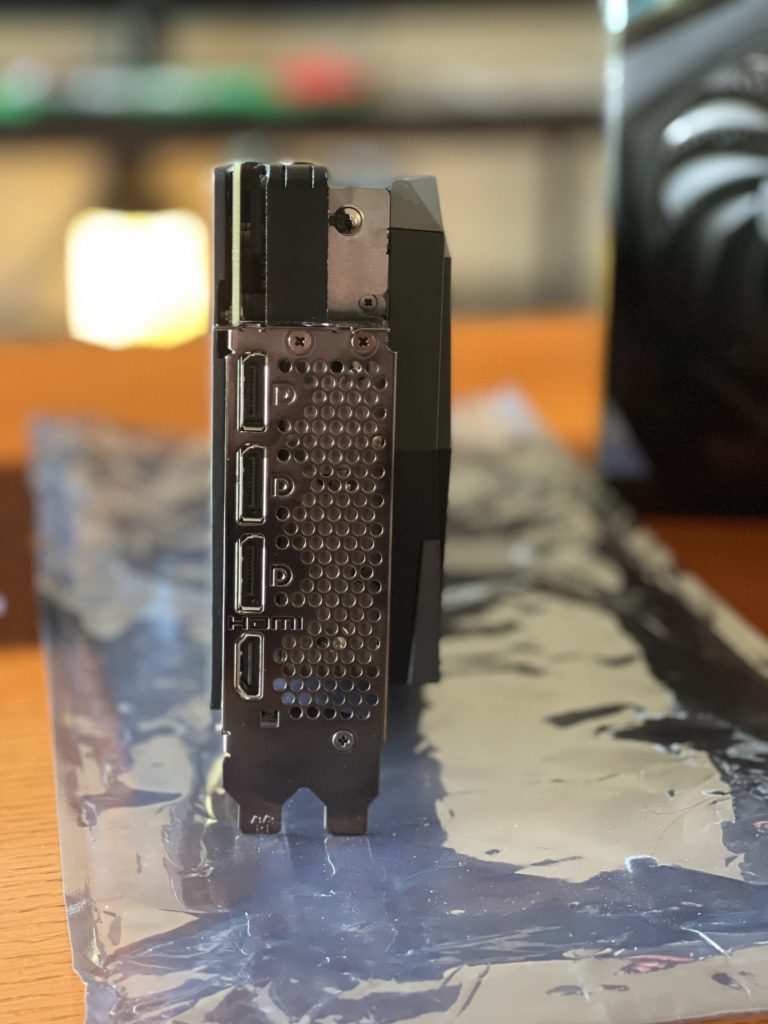
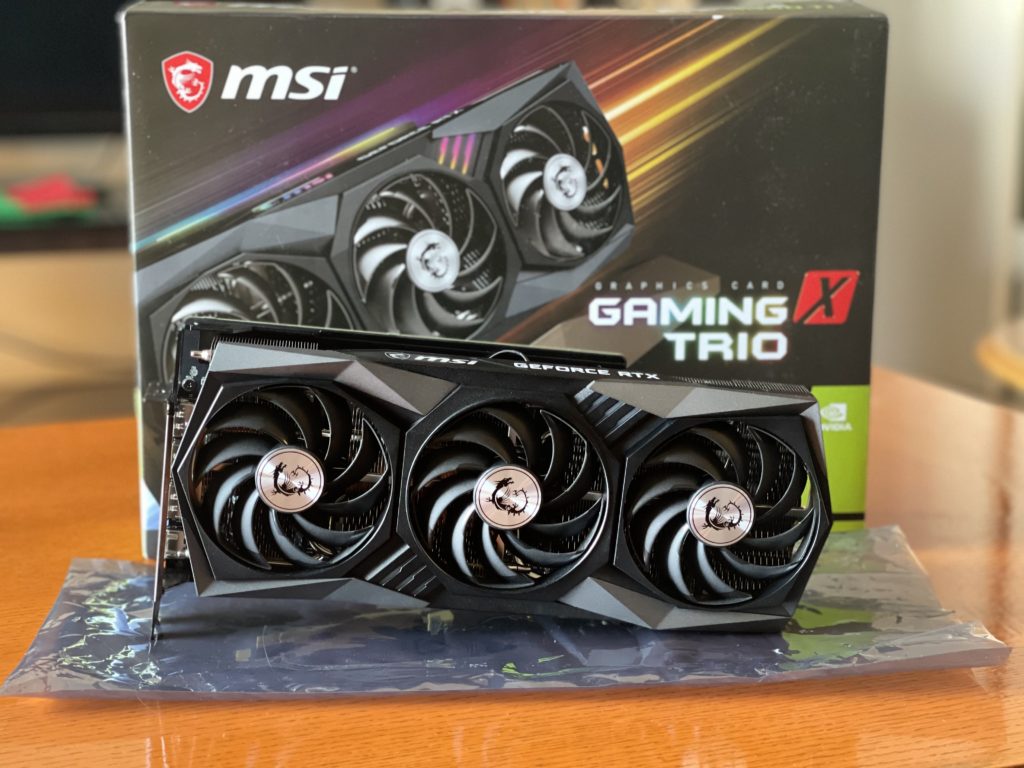
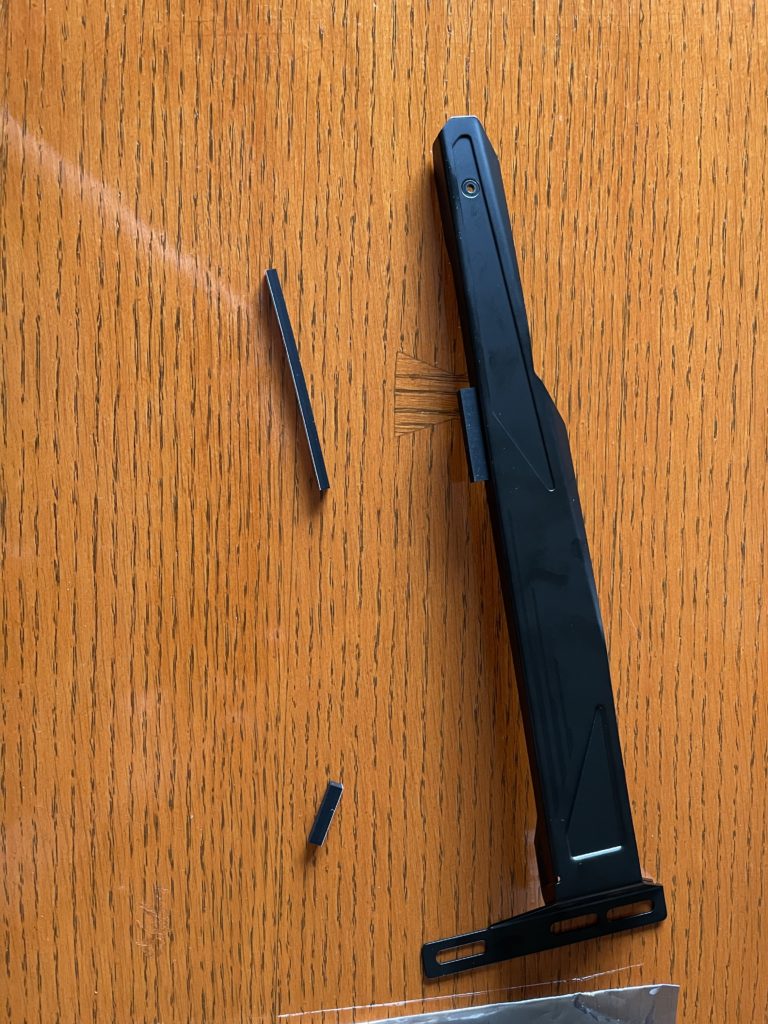
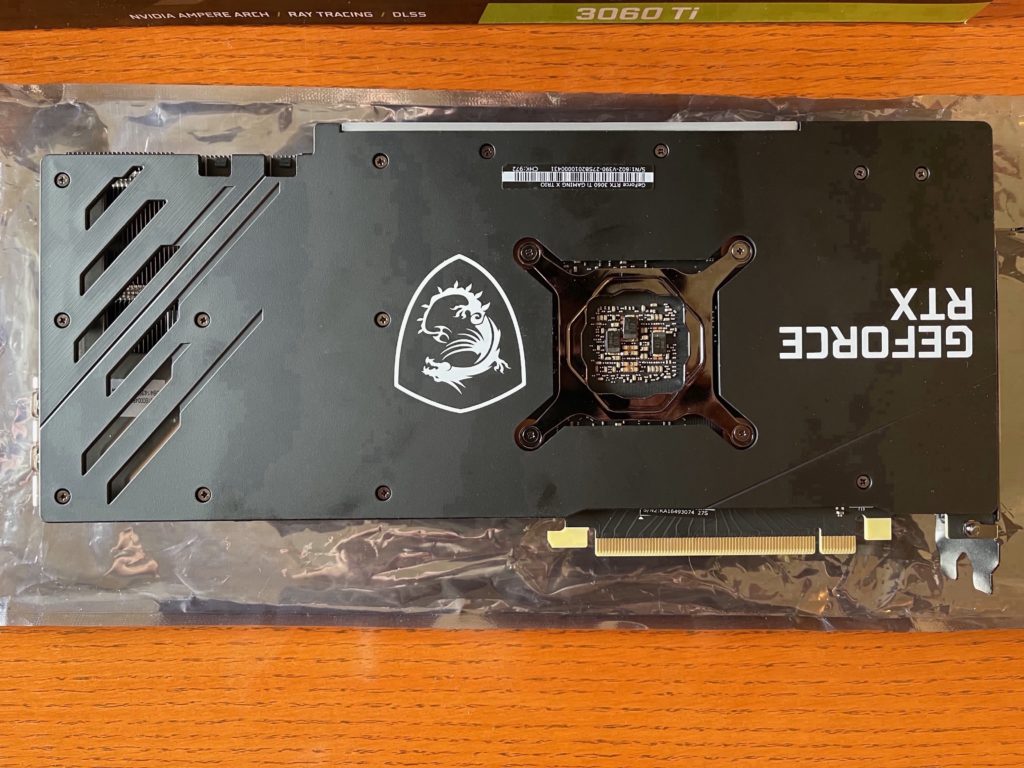
MSI states that the back-plate is made with graphene in order to assist heat conductivity, in my humble opinion this back-plate feels like its constructed primarily of plastic and then coated with a layer of graphene. Overall, not a bad solution but I would have preferred a metal backplate personally.
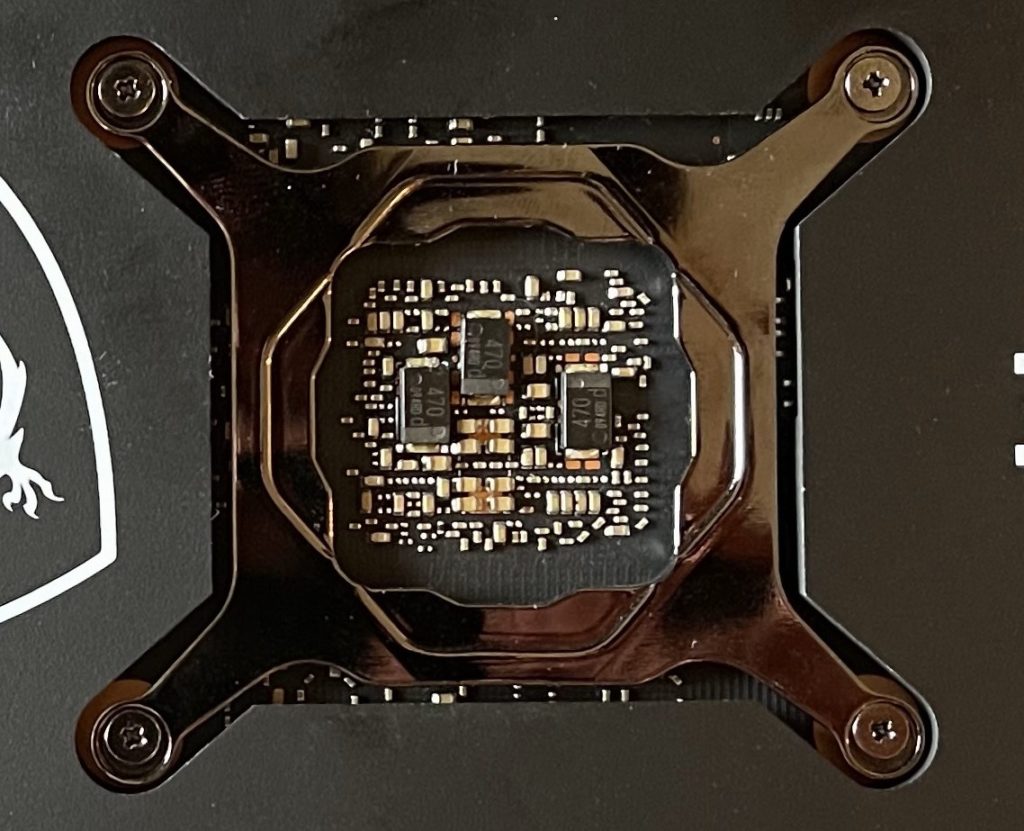

On the back of the GPU, we see 3 SP-CAP capacitors being utilized. This should prove to be more than sufficient for this GPU. We also see MSI is providing power to this GPU via two 8-pin PCI-Express power connectors, this should be more than enough for some great overclocking headroom.
Build Quality
After we finished gathering all the required data for this review we went about disassembling the GPU to get a better look at the cooling solution MSI used. After what seemed like an eternity taking out screws we were finally able to carefully remove the heatsink from the GPU die. As you can see in our photo below, this is an impressive design supplied to end-users right out of the box. We can see 6 CORE PIPE heat pipes that converge upon the die area to make direct contact for maximum thermal transfer. This is two fewer heat pipes when compared to some of MSI’s higher-end models, which is inconsequential once you consider the lesser power requirements needed to run this card.

